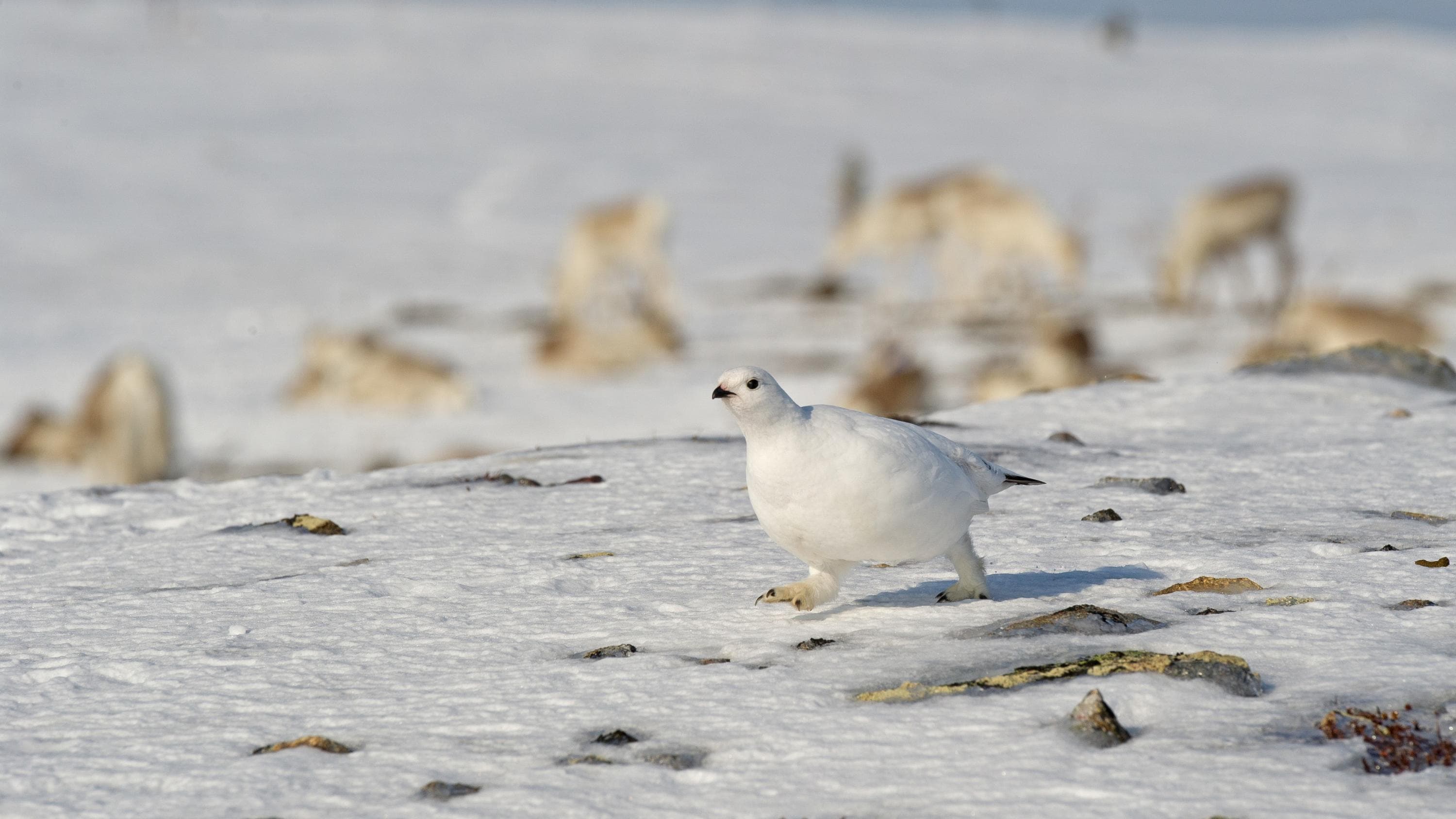Adaptation to changing conditions
The Urho Kekkonen National Park is the place to experience the rich diversity of northern nature: bare round-shaped fell tops, areas covered by mountain birches on the tree line, vast pine and spruce forests, small snowbeds, rapidly streaming meltwater brooks and bottomless mires criss-crossed by narrow land sections. Northern species are able to survive in these harsh and nutrient-poor environments but in the future, they must have the capacity to adapt to changing conditions.
Climate is changing, which will have an impact on all aspects of northern nature
The Earth’s climate is changing, which will have an impact on all aspects of northern nature. Coniferous trees are spreading northwards and there are already pine saplings on fell tops. Many animal and plant species, such as the rock ptarmigan and mountain avens have to find colder habitats in more northern locations or adapt to rising temperatures.
Snow cover is becoming thinner and the snow season shorter, which poses challenges to many familiar species, such as lemmings, during the winter months. A warmer climate helps new species to spread northwards, which may lead to the arrival of newcomers competing with native species.
Benefits of snow
Snow offers protection against the coldness of winter by acting as effective heat insulation. In fact, a sufficiently thick snow cover prevents plants and many animal species from freezing during the winter. In particular, many species of the grouse family, such as the willow ptarmigan, spend most of their time in a nest under the snow during extremely cold periods.
Some of the species spending winters in the north grow a thick white fur or plumage in the autumn. The white camouflage allows them to blend into the winter landscape and hide from predators. If the snow comes late or melts in early spring, animals with winter fur or plumage are easy prey.
Of the endangered species occurring in Finland, 309 (11.6%) live on bare fell top areas (situation in 2019).
Mountain avens
A tough survivor, mountain avens inhabits the windswept tops of the highest fells. At favourable locations, its extensive horizontal growths may reach the age of more than 100 years. Overgrowth accelerated by rising temperatures is a threat to mountain avens, which only grows at open places.
Geometrid moths
Mass occurrences of geometrid moths, such as autumnal and winter months, have occasionally caused substantial damage to mountain birch forests in northern Lapland. During the mass occurrences, their larvae may eat all leaves of the birch forests and its ground vegetation. It is possible that as a result of climate change, new pest species will spread northwards.
Rock ptarmigan
Rock ptarmigan lives in extreme conditions above the tree line. Warming of the Earth’s climate means that it cannot find more favourable habitats by moving to higher areas. Rock ptarmigan is fully adapted to winters and cold temperatures. In fact, its scientific name “Lagopus” means hare’s foot, which refers to its feather-covered feet.
Norway lemming
Norway lemming is one of the few native mammal species of Fennoscandia, which means that it does not occur anywhere else in the world. Lemmings are usually inconspicuous residents of fell top heaths and mountain birch forests but when the strongly fluctuating populations reach their peak, the weak food situation causes the animals to migrate in large numbers. Lemmings spend their winters under thick snow cover, eating moss. The mild and wet winters resulting from climate change will therefore make it more difficult for this species to survive through the winters.
Weasel
Weasel is the world’s smallest member of the Mustelidae family. It is known as an energetic predator but it may also stop to observe the movements of a passing hiker. Weasels spend most of the winter months under the snow cover, catching voles. This means that the impact of climate change on fluctuations in vole populations may also be reflected in the number of weasels.
(This article's text was created in the PAN - Phenomena of Arctic Nature project 2019-2022.)
